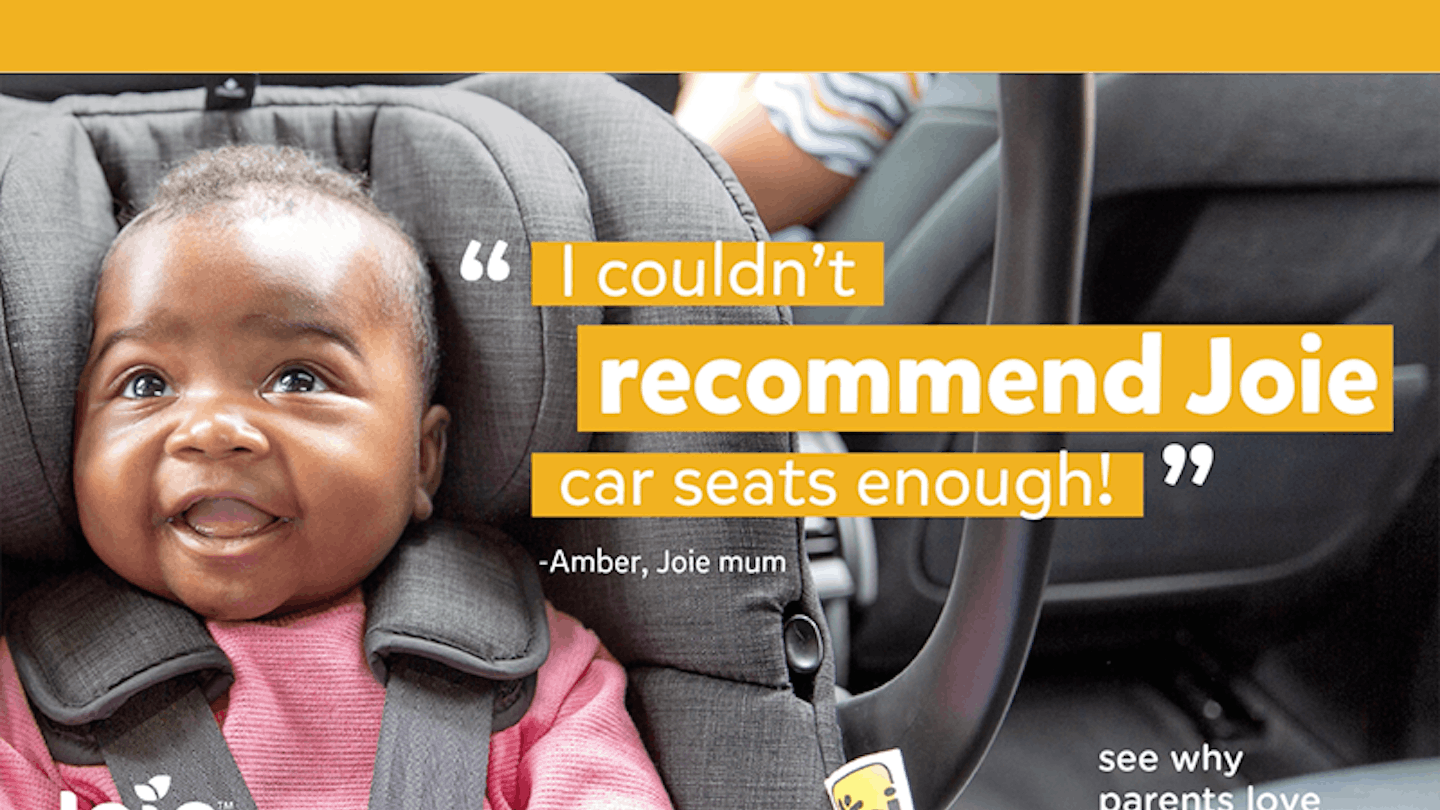Advertisement Feature
Have you ever felt like shopping for your little one’s car seat requires speaking another language? That’s why we’ve teamed up with Joie to demystify the confusing terminology and find out what to look out for when you’re shopping for your next car seat.
Watch the video below for everything you need to know about car seats.
Car seat FAQs
What’s the best car seat to use for my child?
There are three types of car seat suitable for newborns and beyond – these are infant carriers, combination seats and booster seats.
1. Infant carrier
The first type is especially for newborns and is rear-facing, because this allows the car seat to absorb impact, protecting your child’s tender head, neck and spine up to 73% more than forward facing.
Even as they grow, toddlers’ heads are still fragile and disproportionately large (25% of their body weight!) and because damages to the head are the most common and severe injuries during a crash, it’s important to protect those little noggins by riding rearward as long as possible.
A lot of infant carriers will also form part of a travel system, and many parents find that choosing an infant carrier that’s part of a travel system is the easiest way to tackle every leg of the journey. For instance, a carrier like the Joie i-Snug is part of an i-Size tag team that works together to make travelling with baby simple – whether your adventures take you cross country or just down the street!
2. Combination seat
These car seats are usually convertible, with rear-facing and forward-facing options. i-Size standards mandate rearward facing until at least 15 months old, however many global experts recommend continuing up to 2-3 years as a minimum and ideally up to 4 years as required in Sweden.
Wondering how your 2- to 4-year-old could possibly ride rearward comfortably? An i-Size spinning seat like Joie’s i-Spin 360 features the toughest side impact protection to guard little heads and necks, and swivels to keep your child safely rearward all the way from birth to big kid. And with a deep recline and plush padding, they’ll stay comfy even up to 105 cm tall.
3. Booster seat
Experts recommend buckling your backseat buddy in a 5-point harness for as long as possible, for optimal safety. In fact, for most seats, the 5-point harness fits children up to 18kg or even 25kg!
If you think your kiddo is ready to buckle up into a booster seat, just check for a proper seat belt fit before you hit the road. Remember, booster seats are meant to lift older children up so that the vehicle seat belt (which is designed for adults) sits across their lap and over their shoulder correctly, without rubbing uncomfortably against their neck or digging into their abdomen.
What is i-Size?
Cars have changed significantly since ECE R44/04 car seat regulations were enacted and so has our knowledge of what happens during an accident.
ECE R129 (aka i-Size) was implemented in 2013, and requires rear and frontal crash testing, as well as standardised side impact crash trials to ensure better head and neck protection for your passenger. New Q dummies with state-of-the-art sensors that closely simulate a child’s fragile body during impact help manufacturers design products that better protect your baby.
With its height-based child fitting standards, i-Size takes the guesswork out of choosing the correct seat. It also requires that babies ride rear facing until at least 15 months and 75 cm, which is proven safest for still-fragile heads and necks.
What is ISOFIX?
ISOFIX car seats feature two arms that lock onto small metal bars located in the seat of your vehicle. With one quick click, the ISOFIX connectors snap onto these anchor points – no seat belt threading involved. They’re accompanied by install indicators so you can be sure your child is sitting safe with a correct connection.
Before purchasing an ISOFIX seat for your child, make sure your car features ISOFIX anchor points and top tethers where required too. Also, consider whether your child likes to lay back as you cruise – some ISOFIX seats may not recline as deeply as a belt installation car seat.
What is a load leg?
A load leg folds down from your car seat or base to stand on the floor of your vehicle. It may not seem like much, but the load leg absorbs crash forces, keeping your child’s seat from rotating forward too deeply towards the floor, and reducing the chance that your little one will slide up. By absorbing energy and limiting downward motion, the load leg also minimises the force of the seat’s rebound back towards the rear of the car.
What is ADAC safety rating?
ADAC has developed a highly respected car seat testing protocol, with criteria that’s even stricter than what European safety laws require from a child seat. ADAC is renowned for its frontal and side impact testing (at speeds of up to 70 km/h and 50 km/h respectively!) and uses those same Q dummies with high-tech sensors to determine the effects of accidents on children of various ages and sizes.
What do side impact panels do to protect my child?
Side impact panels add an extra layer of protection for your little one. Located on the side wings of the car seat, the panels clip on or lock outwards and act as a crumple zone to slow the force of impact before it reaches the seat itself (and your passenger!)
To discover more about finding the right car seat for your child, go to Joie’s car seat fit guide.
